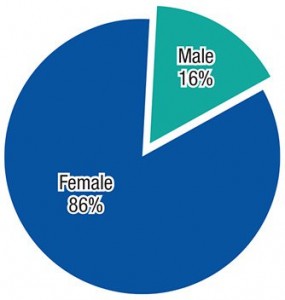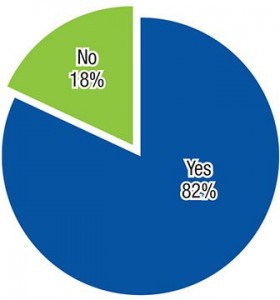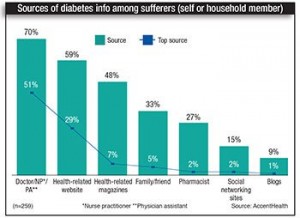AccentHealth collected data in the US through an online survey conducted over a single week, to give a snapshot of where, and from whom, information on diabetes and advice was obtained
Participants responded via AccentHealth’s national, online panel of network viewers, and the survey yielded 520 respondents who were at least 18 years of age, and either themselves or a household member have prediabetes, Type 1 diabetes or Type 2 diabetes.

All data is self-reported and not validated.
Below is the demographic breakdown of the respondents and their behavior
Among diabetes sufferers and those with a diabetic in their household, the critical role of the physician in condition management is most visible, according to a recent online survey of more than 500 AccentHealth viewers.
Eight-in-10 indicate their doctor is very or somewhat involved in their own or their household member’s diabetes management; half report their doctor is their primary source for condition info — 43% more than those using the second-most common source, health-related web sites.
Assuming that similar results would be obtained through a sample of Australian consumers, it is obvious that a lot of work has to be done to win back credentials for being a primary source of health advice and information.

This study certainly suggests an opportunity for the pharmacist to increase engagement around patients with diabetes.
The frequency of visits to the pharmacy and the accessibility of this trusted healthcare professional within the store certainly lends itself to enhanced interaction.
The reliance on the physician/nurse practitioner is quite surprising especially as the association of pharmacy and patient dispensing gives rise to many opportunities to ask or encourage questions.
 Pharmacy has always prided itself on being a first point of contact for condition information of all varieties.
Pharmacy has always prided itself on being a first point of contact for condition information of all varieties.
So it has to be back to the drawing board to identify appropriate channels of outreach with a dash of professional design input to create information brochures that will actually be read.
It is really competitive out there.
